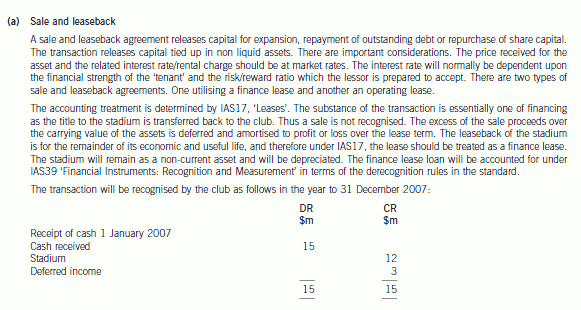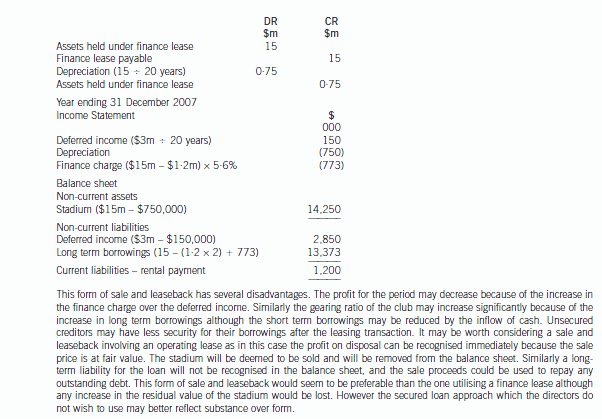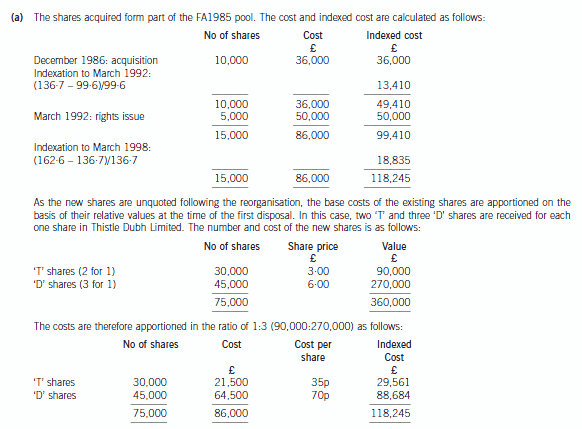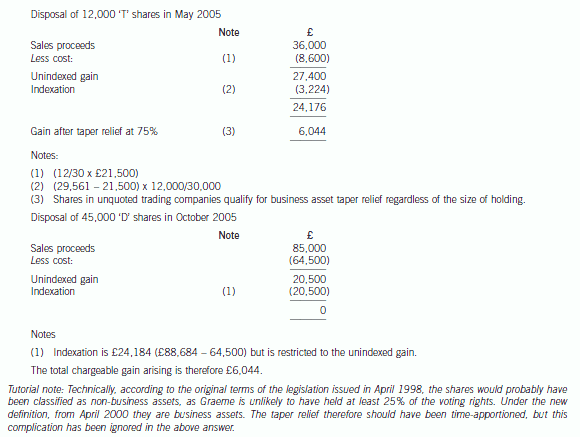2021河北ACCA考试成绩查询时间
发布时间:2021-04-04
河北的考生们,大家对这个ACCA考试都了解多少呢?是否知道成绩怎么查询?什么时候能查询呢?跟着51题库考试学习网一起来看看2021年ACCA考试成绩查询相关情况吧。
2021年ACCA考试成绩公布时间:2021年4月12日,在此分享几点成绩查询后考生们比较关注的几点事项,以便大家查阅!
ACCA考试成绩合格标准:ACCA考试每科满分为100分,50分合格。ACCA考试不会控制一定的考试通过率,因此每门考试只要满足50分及以上即算作通过考试。
ACCA证书申请:
1、通过ACCA专业资格大纲13门课程的考试(其中9门根据学员的教育和专业背景可申请不同程度的免试);
2、完成职业道德与专业技能模块(EPSM);
3、至少三年的相关工作经验。
ACCA证书申请流程:
1、 符合会员的必要条件”3E”的准会员可以填写《ACCA会员申请表》。《ACCA会员申请表》可以直接登陆ACCA网站下载。对于暂时未满足会员的必要条件的准会员,可以在条件满足的任何时间向ACCA递交ACCA会员申请表;
2、 ACCA总部将对会员申请材料进行审核,完全符合条件者将被批准成为ACCA会员,并会收到ACCA英国总部颁发的ACCA会员证书。一般这个过程需要两个月的时间;成为会员约五年后,经申请和资格审查,可以成为资深会员(FCCA)。
3、 ACCA每年2月份和8月份会分别公布上一年12月份和本年6月份的考试成绩。每一个通过ACCA全部考试的学员随后会收到ACCA英国总部颁发的ACCA准会员证书,以确认学员成功通过所有考试。(一般收到时间是3月初和9月初)。
ACCA官方公布的以下情况下之一者,可以申请复议:
(1)参加了考试,并提交了答卷,却通知缺席考试;
(2)缺席考试,却收到考试成绩;
(3)对考试成绩有异议。
如果符合以上情况之一,ACCA学员必须在考试成绩发布日后的15个工作日内提出查卷申请。如果成绩有误,会在下次报考截止日期前收到改正后的成绩。
ACCA继续教育:为保持并更新专业知识和技能,ACCA要求所有会员必须每年参加累计不少于40学时的继续教育。
学习是对自己最好的投资,还在关注ACCA考试的考生们,都一起投资起来吧。后续请大家持续关注51题库考试学习网,51题库考试学习网将会为大家持续更新最新、最热的考试资讯!
下面小编为大家准备了 ACCA考试 的相关考题,供大家学习参考。
3 Seejoy is a famous football club but has significant cash flow problems. The directors and shareholders wish to take
steps to improve the club’s financial position. The following proposals had been drafted in an attempt to improve the
cash flow of the club. However, the directors need advice upon their implications.
(a) Sale and leaseback of football stadium (excluding the land element)
The football stadium is currently accounted for using the cost model in IAS16, ‘Property, Plant, and Equipment’.
The carrying value of the stadium will be $12 million at 31 December 2006. The stadium will have a remaining
life of 20 years at 31 December 2006, and the club uses straight line depreciation. It is proposed to sell the
stadium to a third party institution on 1 January 2007 and lease it back under a 20 year finance lease. The sale
price and fair value are $15 million which is the present value of the minimum lease payments. The agreement
transfers the title of the stadium back to the football club at the end of the lease at nil cost. The rental is
$1·2 million per annum in advance commencing on 1 January 2007. The directors do not wish to treat this
transaction as the raising of a secured loan. The implicit interest rate on the finance in the lease is 5·6%.
(9 marks)
Required:
Discuss how the above proposals would be dealt with in the financial statements of Seejoy for the year ending
31 December 2007, setting out their accounting treatment and appropriateness in helping the football club’s
cash flow problems.
(Candidates do not need knowledge of the football finance sector to answer this question.)


(b) Using models where appropriate, what are likely to be the critical success factors (CSFs) as the business
grows and develops? (10 marks)
(b) David even at this early stage needs to identify the critical success factors and related performance indicators that will show
that the concept is turning into a business reality. Many of the success factors will be linked to customer needs and
expectations and therefore where David’s business must excel in order to outperform. the competition. As an innovator one of
the critical success factors will be the time taken to develop and launch the new vase. Being first-to-market will be critical for
success. His ability to generate sales from demanding corporate customers will be a real indicator of that success. David will
need to ensure that he has adequate patent protection for the product and recognise that it will have a product life cycle.
There look to be a number of alternative markets and the ability to customise the product may be a CSF. Greiner indicates
the different stages a growing business goes through and the different problems associated with each stage. One of David’s
key problems will be to decide what type of business he wants to be. From the scenario it looks as if he is aiming to carry
out most of the functions himself and there is a need to decide what he does and what he gets others to do for him. Indeed
the skills he has may be as an innovator rather than as someone who carries out manufacture, distribution, etc. Gift Designs
may develop most quickly as a firm that creates new products and then licences them to larger firms with the skills to
penetrate the many market opportunities that are present. It is important for David to recognise that turning the product
concept into a viable and growing business may result in a business and a business model very different to what he
anticipated. Gift Designs needs to have the flexibility and agility to take advantage of the opportunities that will emerge over
time.
2 Graeme, aged 57, is married to Catherine, aged 58. They work as medical consultants, and both are higher rate
taxpayers. Barry, their son, is aged 32. Graeme, Catherine and Barry are all UK resident, ordinarily resident and
domiciled. Graeme has come to you for some tax advice.
Graeme has invested in shares for some time, in particular shares in Thistle Dubh Limited. He informs you of the
following transactions in Thistle Dubh Limited shares:
(i) In December 1986, on the death of his grandmother, he inherited 10,000 £1 ordinary shares in Thistle Dubh
Limited, an unquoted UK trading company providing food supplies for sporting events. The probate value of the
shares was 360p per share.
(ii) In March 1992, he took up a rights issue, buying one share for every two held. The price paid for the rights
shares was £10 per share.
(iii) In October 1999, the company underwent a reorganisation, and the ordinary shares were split into two new
classes of ordinary share – ‘T’ shares and ‘D’ shares, each with differing rights. Graeme received two ‘T’ and three
‘D’ shares for each original Thistle Dubh Limited share held. The market values for the ‘T’ shares and the ‘D’
shares on the date of reorganisation were 135p and 405p per share respectively.
(iv) On 1 May 2005, Graeme sold 12,000 ‘T’ shares. The market values for the ‘T’ shares and the ‘D’ shares on that
day were 300p and 600p per share respectively.
(v) In October 2005, Graeme sold all of his ‘D’ shares for £85,000.
(vi) The current market value of ‘T’ shares is 384p per share. The shares remain unquoted.
Graeme and Catherine have owned a holiday cottage in a remote part of the UK for many years. In recent years, they
have used the property infrequently, as they have taken their holidays abroad and the cottage has been let out as
furnished holiday accommodation.
Graeme and Catherine are now considering selling the UK country cottage and purchasing a holiday villa abroad.
Initially they plan to let this villa out on a furnished basis, but following their anticipated retirement, would expect to
occupy the property for a significant part of the year themselves, possibly moving to live in the villa permanently.
Required:
(a) Calculate the total chargeable gains arising on Graeme’s disposals of ‘T’ and ‘D’ ordinary shares in May and
October 2005 respectively. (7 marks)


This scenario summarises the development of a company called Rock Bottom through three phases, from its founding in 1965 to 2008 when it ceased trading.
Phase 1 (1965–1988)
In 1965 customers usually purchased branded electrical goods, largely produced by well-established domestic companies, from general stores that stocked a wide range of household products. However, in that year, a recent university graduate, Rick Hein, established his first shop specialising solely in the sale of electrical goods. In contrast to the general stores, Rick Hein’s shop predominantly sold imported Japanese products which were smaller, more reliable and more sophisticated than the products of domestic competitors. Rick Hein quickly established a chain of shops, staffed by young people who understood the capabilities of the products they were selling. He backed this up with national advertising in the press, an innovation at the time for such a specialist shop. He branded his shops as ‘Rock Bottom’, a name which specifically referred to his cheap prices, but also alluded to the growing importance of
rock music and its influence on product sales. In 1969, 80% of sales were of music centres, turntables, amplifiers and speakers, bought by the newly affluent young. Rock Bottom began increasingly to specialise in selling audio equipment.
Hein also developed a high public profile. He dressed unconventionally and performed a number of outrageous stunts that publicised his company. He also encouraged the managers of his stores to be equally outrageous. He rewarded their individuality with high salaries, generous bonus schemes and autonomy. Many of the shops were extremely successful, making their managers (and some of their staff) relatively wealthy people.
However, by 1980 the profitability of the Rock Bottom shops began to decline significantly. Direct competitors using a similar approach had emerged, including specialist sections in the large general stores that had initially failed to react to the challenge of Rock Bottom. The buying public now expected its electrical products to be cheap and reliable.
Hein himself became less flamboyant and toned down his appearance and actions to satisfy the banks who were becoming an increasingly important source of the finance required to expand and support his chain of shops.
Phase 2 (1989–2002)
In 1988 Hein considered changing the Rock Bottom shops into a franchise, inviting managers to buy their own shops (which at this time were still profitable) and pursuing expansion though opening new shops with franchisees from outside the company. However, instead, he floated the company on the country’s stock exchange. He used some of the capital raised to expand the business. However, he also sold shares to help him throw the ‘party of a lifetime’ and to purchase expensive goods and gifts for his family. Hein became Chairman and Chief Executive Officer (CEO) of the newly quoted company, but over the next thirteen years his relationship with his board and shareholders became increasingly difficult. Gradually new financial controls and reporting systems were put in place. Most of the established managers left as controls became more centralised and formal. The company’s performance was solid but unspectacular. Hein complained that ‘business was not fun any more’. The company was legally required to publish directors’ salaries in its annual report and the generous salary package enjoyed by the Chairman and CEO increasingly became an issue and it dominated the 2002 Annual General Meeting (AGM). Hein was embarrassed by its publication and the discussion it led to in the national media. He felt that it was an infringement of his privacy and
civil liberties.
Phase 3 (2003–2008)
In 2003 Hein found the substantial private equity investment necessary to take Rock Bottom private again. He also used all of his personal fortune to help re-acquire the company from the shareholders. He celebrated ‘freeing Rock Bottom from its shackles’ by throwing a large celebration party. Celebrities were flown in from all over the world to attend. However, most of the new generation of store managers found Hein’s style. to be too loose and unfocused. He became rude and angry about their lack of entrepreneurial spirit. Furthermore, changes in products and how they were purchased meant that fewer people bought conventional audio products from specialist shops. The reliability of these products now meant that they were replaced relatively infrequently. Hein, belatedly, started to consider selling via an Internet site. Turnover and profitability plummeted. In 2007 Hein again considered franchising the company,but he realised that this was unlikely to be successful. In early 2008 the company ceased trading and Hein himself,now increasingly vilified and attacked by the press, filed for personal bankruptcy.
Required:
(a) Analyse the reasons for Rock Bottom’s success or failure in each of the three phases identified in the
scenario. Evaluate how Rick Hein’s leadership style. contributed to the success or failure of each phase.
(18 marks)
(b) Rick Hein considered franchising the Rock Bottom brand at two points in its history – 1988 and 2007.
Explain the key factors that would have made franchising Rock Bottom feasible in 1988, but would have
made it ‘unlikely to be successful’ in 2007. (7 marks)
(a) The product life cycle model suggests that a product passes through six stages: introduction, development, growth, shakeout,
maturity and decline. The first Rock Bottom phase appears to coincide with the introduction, development and growth periods
of the products offered by the company. These highly specified, high quality products were new to the country and were
quickly adopted by a certain consumer segment (see below). The life cycle concept also applies to services, and the innovative
way in which Rock Bottom sold and marketed the products distinguished the company from potential competitors. Not only
were these competitors still selling inferior and older products but their retail methods looked outdated compared with Rock Bottom’s bright, specialist shops. Rock Bottom’s entry into the market-place also exploited two important changes in the
external environment. The first was the technological advance of the Japanese consumer electronics industry. The second
was the growing economic power of young people, who wished to spend their increasing disposable income on products that
allowed them to enjoy popular music. Early entrants into an industry gain experience of that industry sooner than others. This
may not only be translated into cost advantages but also into customer loyalty that helps them through subsequent stages of
the product’s life cycle. Rock Bottom enjoyed the advantages of a first mover in this industry.
Hein’s leadership style. appears to have been consistent with contemporary society and more than acceptable to his young
target market. As an entrepreneur, his charismatic leadership was concerned with building a vision for the organisation and
then energising people to achieve it. The latter he achieved through appointing branch managers who reflected, to some
degree, his own style. and approach. His willingness to delegate considerable responsibility to these leaders, and to reward
them well, was also relatively innovative. The shops were also staffed by young people who understood the capabilities of the
products they were selling. It was an early recognition that intangible resources of skills and knowledge were important to the
organisation.
In summary, in the first phase Rock Bottom’s organisation and Hein’s leadership style. appear to have been aligned with
contemporary society, the customer base, employees and Rock Bottom’s position in the product/service life cycle.
The second phase of the Rock Bottom story appears to reflect the shakeout and maturity phases of the product life cycle. The
entry of competitors into the market is a feature of the growth stage. However, it is in the shakeout stage that the market
becomes saturated with competitors. The Rock Bottom product and service approach is easily imitated. Hein initially reacted
to these new challenges by a growing maturity, recognising that outrageous behaviour might deter the banks from lending to
him. However, the need to raise money to fund expansion and a latent need to realise (and enjoy) his investment led to the
company being floated on the country’s stock exchange. This, eventually, created two problems.
The first was the need for the company to provide acceptable returns to shareholders. This would have been a new challenge
for Hein. He would have to not only maintain dividends to external shareholders, but he would also have to monitor and
improve the publicly quoted share price. In an attempt to establish an organisation that could deliver such value, changes
were made in the organisational structure and style. Most of the phase 1 entrepreneur-style. managers left. This may have
been inevitable anyway as Rock Bottom would have had problems continuing with such high individual reward packages in
a maturing market. However, the new public limited organisation also demanded managers who were more transactional
leaders, focusing on designing systems and controlling performance. This style. of management was alien to Rick’s approach.
The second problem was the need for the organisation to become more transparent. The publishing of Hein’s financial details
was embarrassing, particularly as his income fuelled a life-style. that was becoming less acceptable to society. What had once
appeared innovative and amusing now looked like an indulgence. The challenge now was for Hein to change his leadership
style. to suit the new situation. However, he ultimately failed to do this. Like many leaders who have risen to their position
through entrepreneurial ability and a dominant spirit, the concept of serving stakeholders rather than ordering them around
proved too difficult to grasp. The sensible thing would have been to leave Rock Bottom and start afresh. However, like many
entrepreneurs he was emotionally attached to the company and so he persuaded a group of private equity financiers to help
him buy it back. Combining the roles of Chairman and Chief Executive Officer (CEO) is also controversial and likely to attract
criticism concerning corporate governance.
In summary, in the second phase of Hein’s leadership he failed to change his approach to reflect changing social values, a
maturing product/service market-place and the need to serve new and important stakeholders in the organisation. He clearly
saw the public limited company as a ‘shackle’ on his ambition and its obligations an infringement of his personal privacy.
It can be argued that Hein took Rock Bottom back into private ownership just as the product life cycle moved into its decline
stage. The product life cycle is a timely reminder that any product or service has a finite life. Forty years earlier, as a young
man, Hein was in touch with the technological and social changes that created a demand for his product and service.
However, he had now lost touch with the forces shaping the external environment. Products have now moved on. Music is
increasingly delivered through downloaded files that are then played through computers (for home use) or MP3s (for portable
use). Even where consumers use traditional electronic equipment, the reliability of this equipment means that it is seldom
replaced. The delivery method, through specialised shops, which once seemed so innovative is now widely imitated and
increasingly, due to the Internet, less cost-effective. Consumers of these products are knowledgeable buyers and are only
willing to purchase, after careful cost and delivery comparisons, through the Internet. Hence, Hein is in a situation where he
faces more competition to supply products which are used and replaced less frequently, using a sales channel that is
increasingly uncompetitive. Consequently, Hein’s attempt to re-vitalise the shops by using the approach he adopted in phase
1 of the company was always doomed to failure. This failure was also guaranteed by the continued presence of the managers
appointed in phase 2 of the company. These were managers used to tight controls and targets set by centralised management.
To suddenly be let loose was not what they wanted and Hein appears to have reacted to their inability to act entrepreneurially
with anger and abuse. Hein’s final acts of reinvention concerned the return to a hedonistic, conspicuous life style. that he had
enjoyed in the early days of the company. He probably felt that this was possible now that he did not have the reporting
requirements of the public limited company. However, he had failed to recognise significant changes in society. He celebrated
the freeing of ‘Rock Bottom from its shackles’ by throwing a large celebration party. Celebrities were flown in from all over the
world to attend. It seems inevitable that the cost and carbon footprint of such an event would now attract criticism.
Finally, in summary, Hein’s approach and leadership style. in phase 3 became increasingly out of step with society’s
expectations, customers’ requirements and employees’ expectations. However, unlike phase 2, Hein was now free of the
responsibilities and controls of professional management in a public limited company. This led him to conspicuous activities
that further devalued the brand, meaning that its demise was inevitable.
(b) At the end of the first phase Hein still had managers who were entrepreneurial in their outlook. It might have been attractive
for them to become franchisees, particularly as this might be a way of protecting their income through the more challenging
stages of the product and service life cycle that lay ahead. However, by the time Hein came to look at franchising again (phase
3), the managers were unlikely to be of the type that would take up the challenge of running a franchise. These were
managers used to meeting targets within the context of centrally determined policies and budgets within a public limited
company. Hein would have to make these employees redundant (at significant cost) and with no certainty that he could find
franchisees to replace them.
At the end of phase 1, Rock Bottom was a strong brand, associated with youth and innovation. First movers often retain
customer loyalty even when their products and approach have been imitated by new aggressive entrants to the market. A
strong brand is essential for a successful franchise as it is a significant part of what the franchisee is buying. However, by the
time Hein came to look at franchising again in phase 3, the brand was devalued by his behaviour and incongruent with
customer expectations and sales channels. For example, it had no Internet sales channel. If Hein had developed Rock Bottom
as a franchise it would have given him the opportunity to focus on building the brand, rather than financing the expansion
of the business through the issue of shares.
At the end of phase 1, Rock Bottom was still a financially successful company. If it had been franchised at this point, then
Hein could have realised some of his investment (through franchise fees) and used some of this to reward himself, and the
rest of the money could have been used to consolidate the brand. Much of the future financial risk would have been passed
to the franchisees. There would have been no need to take Rock Bottom public and so suffer the scrutiny associated with a
public limited company. However, by the time Hein came to look at franchising again in phase 3, most of the shops were
trading at a loss. He saw franchising as a way of disposing of the company in what he hoped was a sufficiently well-structured
way. In effect, it was to minimise losses. It seems highly unlikely that franchisees would have been attracted by investing in
something that was actually making a loss. Even if they were, it is unlikely that the franchise fees (and hence the money
immediately realised) would be very high.
声明:本文内容由互联网用户自发贡献自行上传,本网站不拥有所有权,未作人工编辑处理,也不承担相关法律责任。如果您发现有涉嫌版权的内容,欢迎发送邮件至:contact@51tk.com 进行举报,并提供相关证据,工作人员会在5个工作日内联系你,一经查实,本站将立刻删除涉嫌侵权内容。
- 2020-09-05
- 2020-08-12
- 2021-01-06
- 2020-10-19
- 2020-01-10
- 2020-01-10
- 2020-01-10
- 2020-09-05
- 2020-09-05
- 2021-01-08
- 2020-10-18
- 2020-08-12
- 2020-10-18
- 2021-01-07
- 2020-08-12
- 2019-03-20
- 2019-01-05
- 2021-04-07
- 2020-10-19
- 2019-03-20
- 2020-09-05
- 2020-08-12
- 2019-01-05
- 2019-03-20
- 2019-01-05
- 2021-04-08
- 2020-09-04
- 2020-02-23
- 2020-01-10
- 2020-08-12